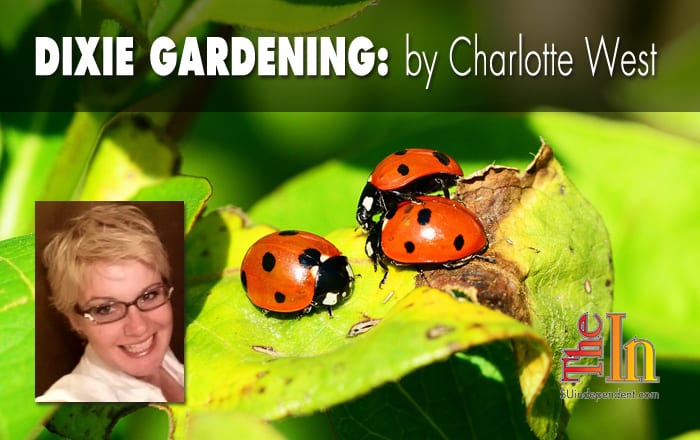
Aphids seem to be the most troublesome pests in our gardens right now. If you are shifting toward organic gardening methods, understanding these pests and how to control them is the starting point in dealing with them. Aphids like happy plants and soil, plain and simple. The more nitrogen-rich the soil is, the more they flourish. This is where ladybugs come into play.
Ladybugs are famous eaters of aphids. In small gardens, the key is to keep them there. If you have plenty of pests for them to eat, they’ll most likely stick around for awhile—at least long enough to do their job. If you are lucky enough to have a few trees right next to your garden, odds are that you may end up with plenty of ladybugs, as they usually lay their eggs within tree bark crevices. If not, don’t fret. You can purchase ladybugs from local greenhouses or nurseries. Make sure to release any ladybugs you purchase in the evening or at night, because once they come out of hibernation, they will naturally seek shelter and food—within your garden, if they can find them there.
The different colors of ladybugs may confuse you. Not all are red. The lighter red and orange ones are excellent for keeping aphids at bay, while the darker ones are great for keeping mealybugs, white flies, and spider mites in check. If you still feel that aphids are a problem, even with the help of the ladybugs, paint some bowls or dish pans bright yellow, and fill them with soapy water. The aphids will be attracted to them. You may still have a problem, even with lots of ladybugs, if you notice a sudden flurry of small, black ants with trails leading to your plants. They’re clearing the aphid larvae that they stocked up in the fall out of their mounds. Try squeezing lemon juice in and around the ant holes. This should deter them from depositing the aphid larva back into your garden.
Now, let’s discuss the praying mantises. They usually hatch in late May and through June. If you purchase them, like most people do, let the ladybugs do their job first before introducing the mantises, as they will eat any soft-bodied insects, even ladybugs. But typically, ladybugs have moved on at this point, due to the lack of food in the garden, and will travel back into trees or bushes. Praying mantises, once established, tend to stick around the same location each year if enough food is there for them. They do not like to set up new residences each year. When newly hatched, they will take up where the ladybugs left off and feed on remaining aphids and earwigs. As they grow, they will feed on snails and larger prey. If you like, you can look for their egg casings in the fall (they look like straw-colored foam). Gather them, and attach them to nearby tree limbs in or around your garden. Or, if you lack trees, place some bamboo sticks nearby, and affix the egg casings to them for a June release.
Remember not to let your first instinct be to run out and kill everything just because you see harmful pests in your garden. If you can lend a little assistance to Mother Nature, organically, you will usually have great results. So, now you have the answer, folks: ladybugs first, praying mantises second.




